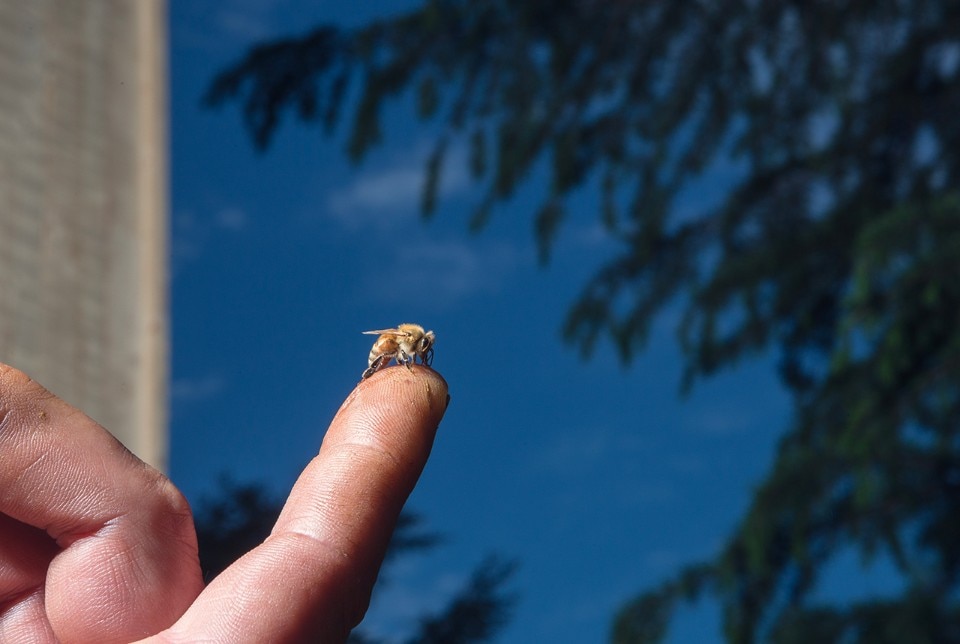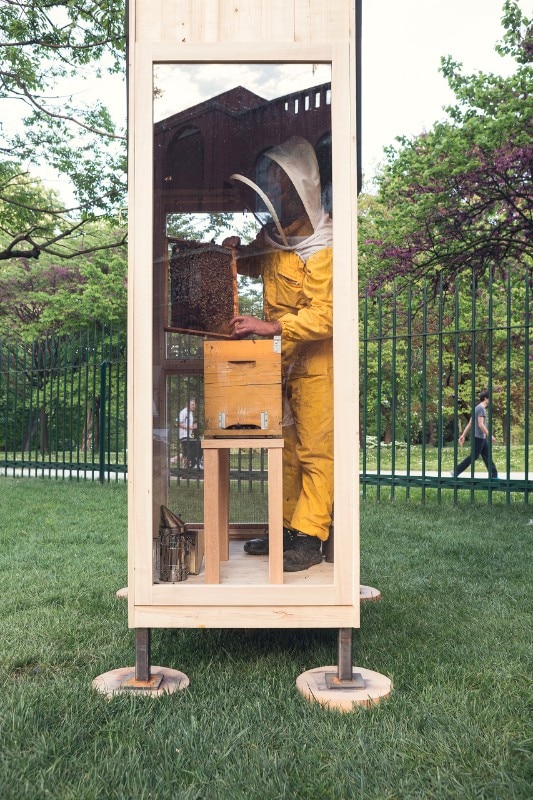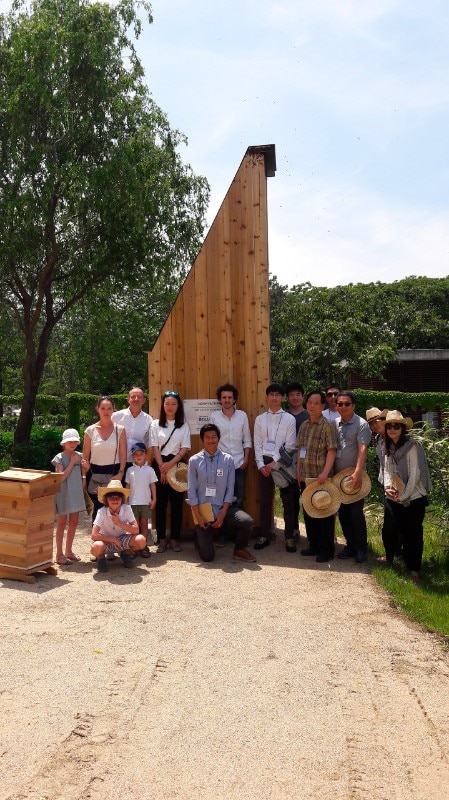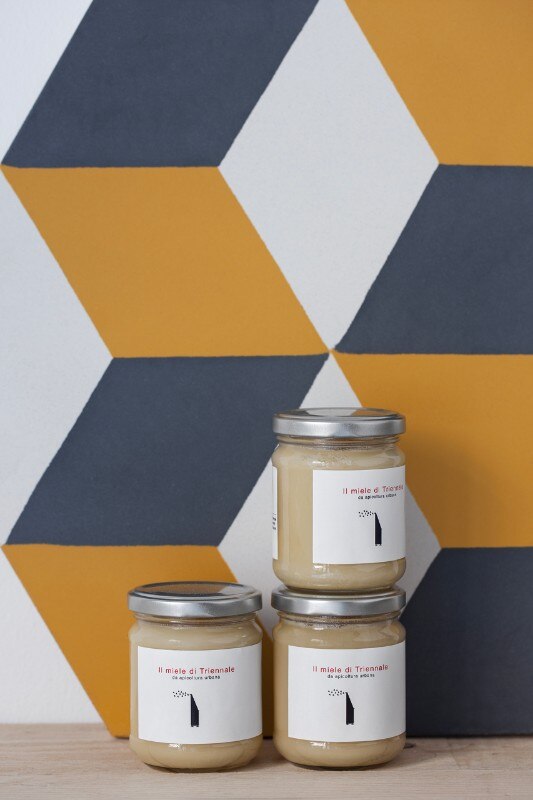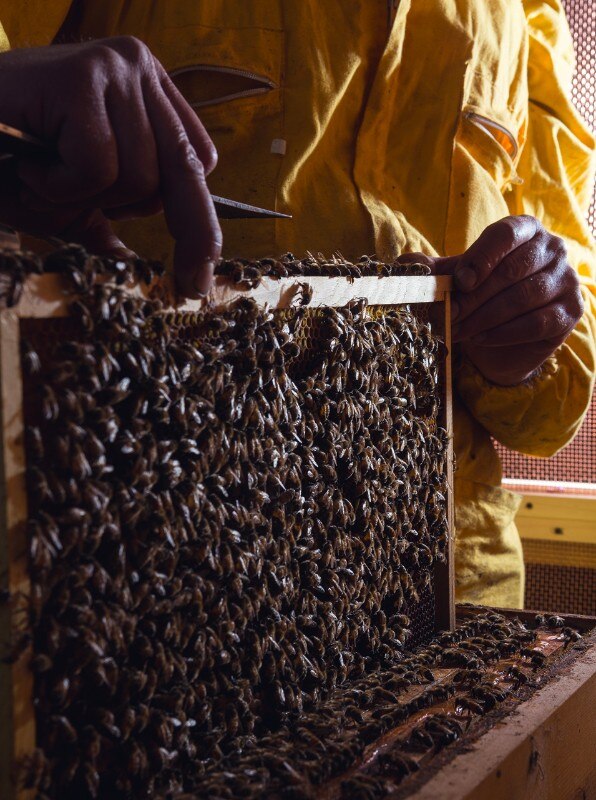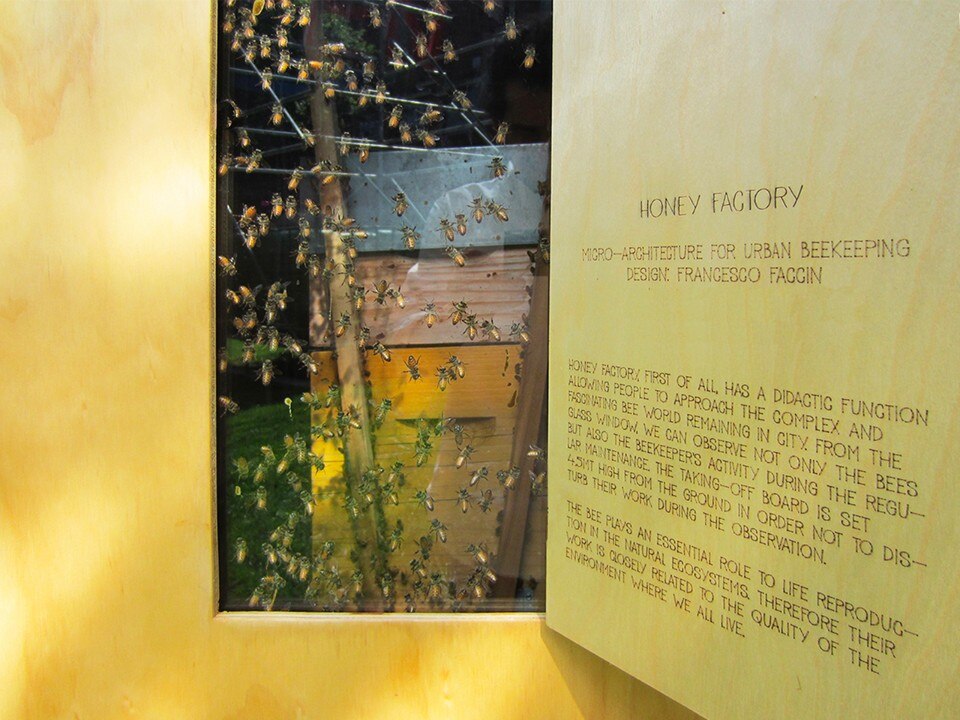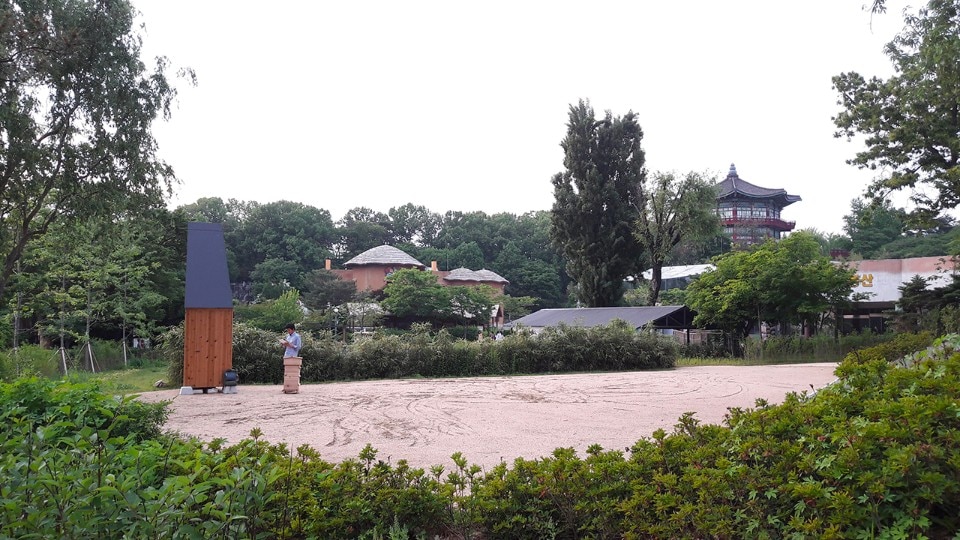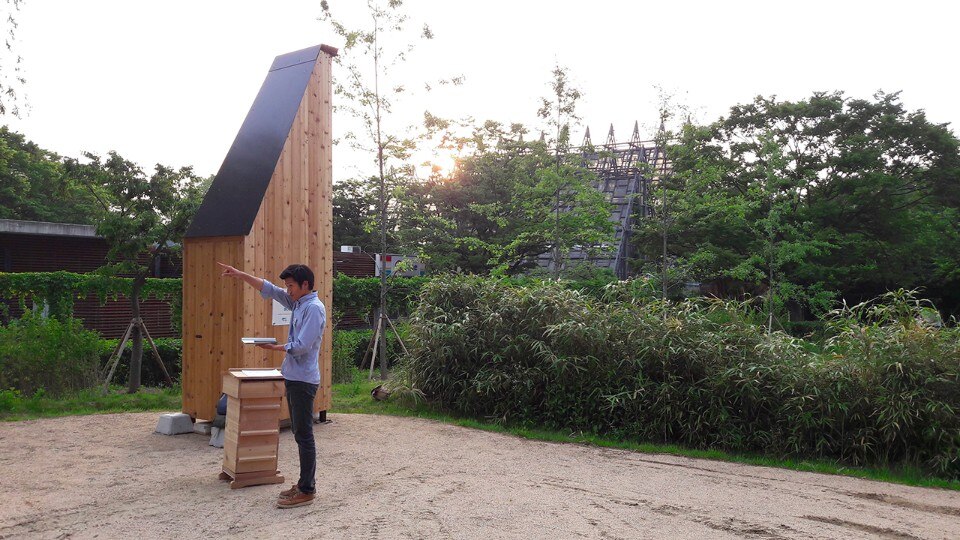“It’s 2030. What are you up to?” The Lavazza calendar for 2018 asks this question to 17 women and men whose actions and projects are heading in the right direction, the one indicated by the United Nations in 2015 to make the world a better place by 2030 through the implementation of a 17-point agenda. Portrayed in black and white by the Greek-British photographer Platon Antoniou, the calendar characters bounce the question back to us as we look at them. They solicit our commitment in meeting the goals through small daily actions. So who are the global icons selected by Francesca Lavazza with help from Jeffrey Sachs, a special advisor to the United Nations Secretary-General António Guterres? Some are famous, but not necessarily for the reason they were chosen as ambassadors of sustainability – the chef Massimo Bottura, the actor Jeremy Renner, the author of The Blue Economy Gunter Pauli, the co-founder of the Rainforest Alliance, Daniel Katz, and the tennis superstar Andre Agassi. Others are commoners who have instigated small revolutions of a big type – one is Francesco Faccin, chosen to represent goal number 11: Make cities and human settlements inclusive, safe, resilient and sustainable.
His design called Honey Factory is a beehive made for city use. It originated in an open invitation from the design impresario Marva Griffin in 2015 to contribute a project to the Milan Furniture Fair, after which it was installed in the gardens of the Triennale di Milano for the opening of the World Expo in May that year. These gardens have been the Honey Factory’s home ever since. Four hives been reproduced in Seoul, with another 20 on the way. More inquiries have come in from Japan and Germany. At the moment, a feasibility study is being conducted to engineer it serially, allowing for worldwide distribution. I met up with Faccin at the UniCredit pavilion in Milan for the official presentation of the Lavazza calendar in November.
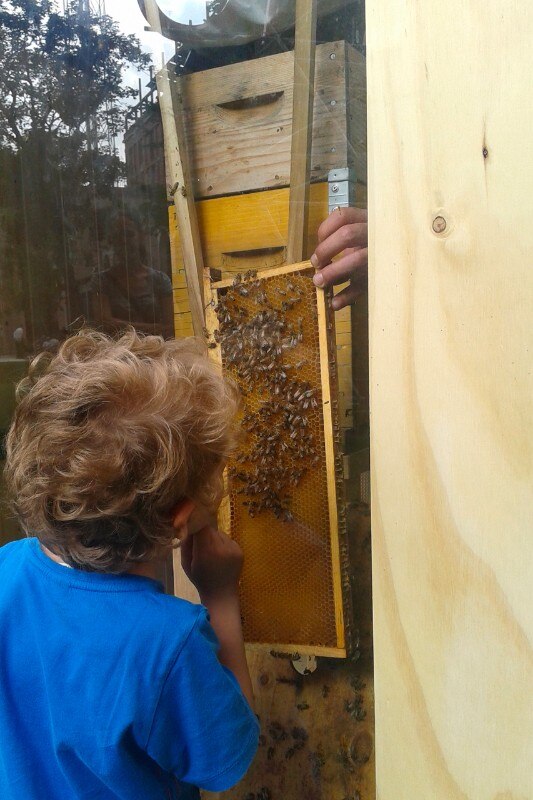
It’s quite amazing to see your poster-size face with two (artificial) bees clinging to your cheek. It transports you and your beehive to a higher dimension. It transmits the potential of the Honey Factory.
I must admit I’m still a bit flabbergasted for having been selected with personalities of such calibre. You can work on sustainability on different scales – there’s Boyan Slay with his huge Ocean Cleanup project that needs millions of dollars in financing to be deployed, and there’s me with my little beehive that needs small economic effort, but could make a big change for people living in urban surroundings.
The Lavazza calendar is the latest in a series of slow gains in visibility of your project. Do you think these are signs of a change in sensibility to these themes?
Yes. Only a few years ago, a project like this would have died right after the inauguration. Now, we are seeing continuous spontaneous initiatives indicating interest in a way of making design that is linked to global problems. Many of us are now working toward common goals. But industry, governments and nongovernmental organisations still need to cultivate greater awareness. The strength of design is that it makes things physical and concrete.
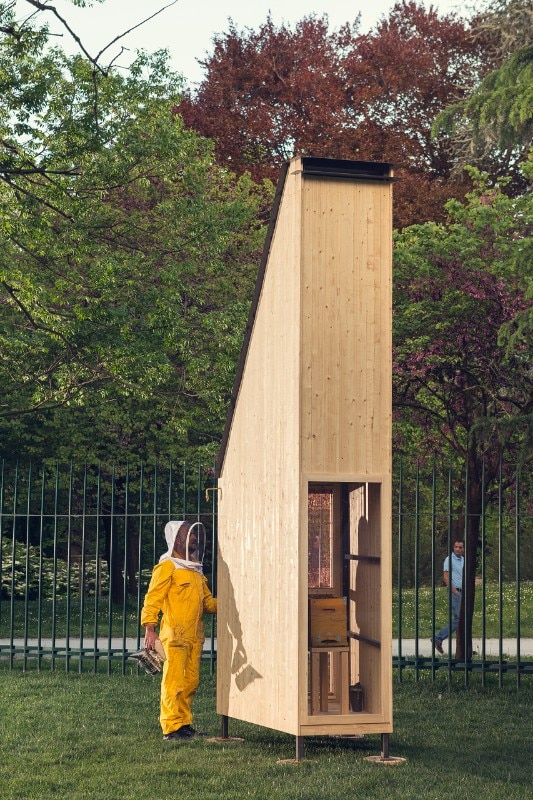
How did the Honey Factory begin?
It was a brainwave I had, and an unexpected opportunity. There was no aim to make a commercial project. I had seen a photograph in a magazine of Chinese farmers pollinating flowers by hand. Enormous areas of China are without bees because of the massive use of pesticides. The consequences of shrinking bee populations is not just bucolic, but also political and economic. 75 per cent of industrial agriculture still depends on pollination by bees. Menaced bees migrate from the countryside to the city, where the environment is less hostile, paradoxically. This is one aspect of what we might call a dystopian “new nature”.
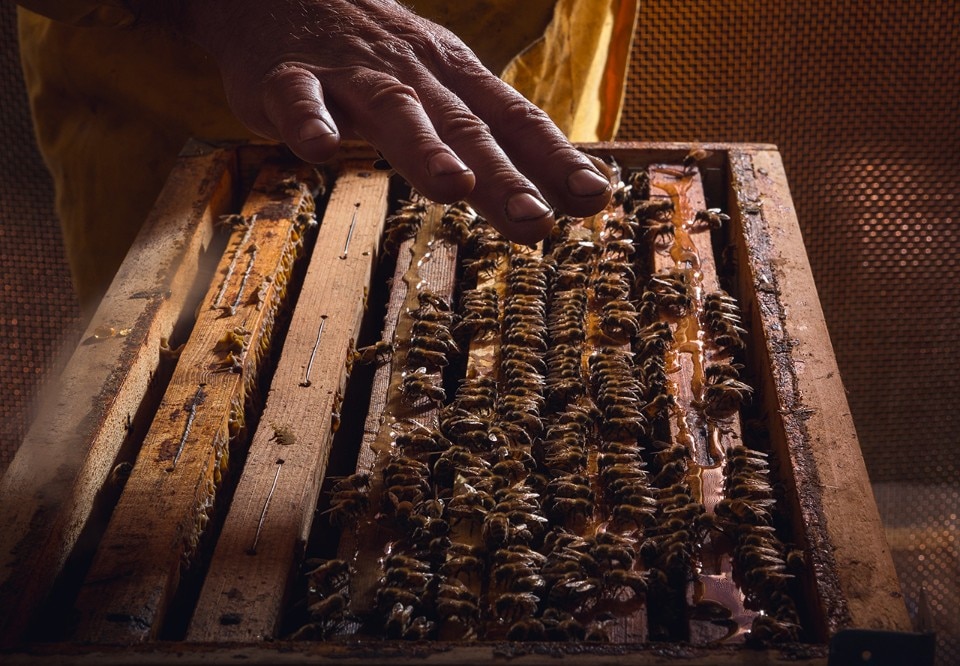
Would you say your project is based on ecological activism?
Not of the type where I want to save nature, which I find quite anthropocentric and comparable to wanting to patch up a hole caused by the human meteorite. We need to accept living in a new dystopian world and seek alternative solutions without trying to reclaim what has already been destroyed, because that’s not possible. I do not believe that by 2030 we will have gone back to living in harmony with nature. We will have to search for new ways of coexisting, along the lines of what the American philosopher Timothy Morton calls “dark ecology”.
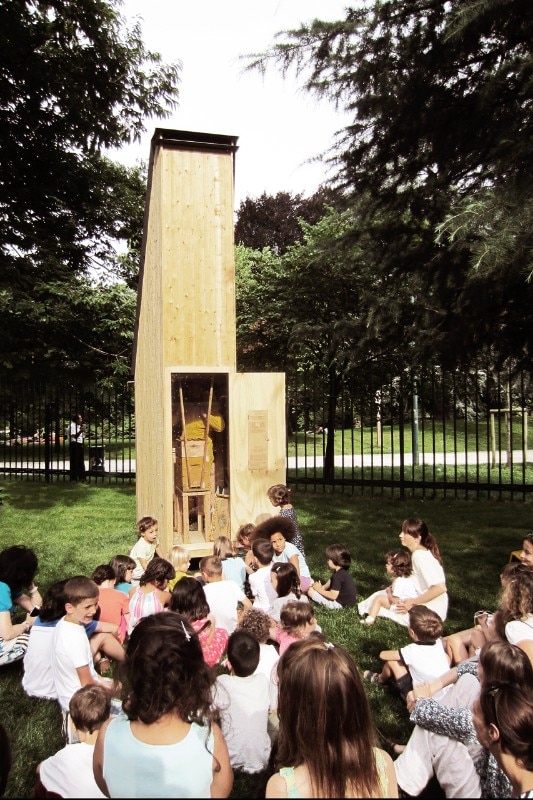
Do you see design as an aid in transitioning to a new world?
Definitely. But it also has to be a tool that places our attention on certain issues. The Honey Factory is nothing extraordinary. Everybody in the world is working on urban bee keeping. Many small hives are found on balconies and in gardens – in London there are over 5,000. Perhaps the advantage of the Honey Factory is that it has kept communication alive with a number of abstract messages that have been sent out and received. Generally, the first question people ask me is about the extinction of bees, not how my beehive is built. I really appreciate that.
It seems important that schools transmit a redefined concept of design and its applications.
That’s a fundamental step. I do it in the design course I teach at the Free University of Bozen-Bolzano. I dedicate each semester to one natural element: water, earth, fire or air, which are the designated departure points to conceive objects. After an initial moment of confusion for this unconventional approach, my students succeed in ideating amazing projects.
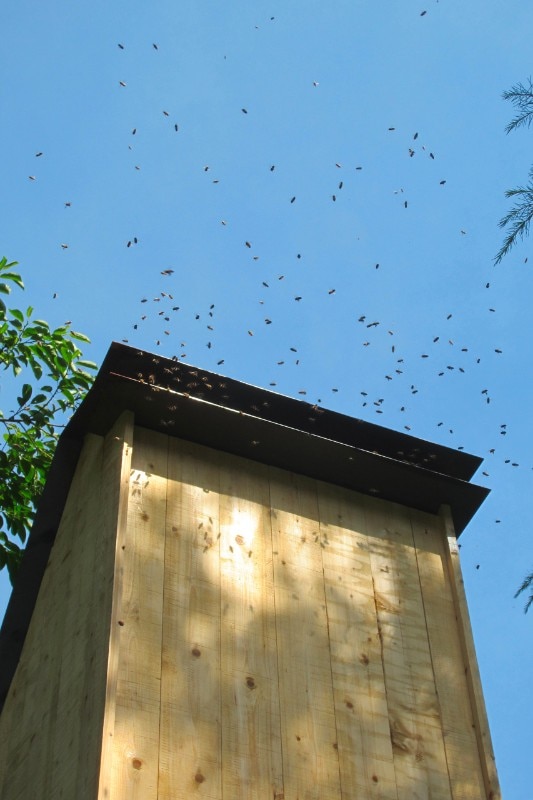
The awareness that design is playing a crucial role in the configuring of a new relation with nature is being promoted by events such as the 2018 Lexus Design Award, titled CO-, and the theme chosen for the 2018 Triennale di Milano, “Broken Nature”, under the curatorship of Paola Antonelli, who has announced that urban bee keeping will be part of the event.
These are all signs of confirmation. Antonelli’s overview will contain the less classic sides of design. It will feature design’s integration with the human body, organically grown materials and other ambits far from mine, but very rich in potential and highly topical. In light of the interest she has expressed for bees, I hope she decides to prolong the Honey Factory’s installation outside the Triennale building. It is playing a surprisingly important role there. For two years now, researchers from the Faculty of Veterinary Medicine have been using the dead bees that fall to the ground at the base of the hive to obtain biomonitoring data related to Milan’s air quality. They analyse the particulates and heavy metals deposited on their hairs. The data has turned out to be reliable and much less costly to obtain than the information supplied by the control units run by the regional environmental health agency, Arpa. With the municipality and the university, we are working toward installing beehives around the city. A scientific paper on the researchers’ study is in the final phase, to be diffused around the world. Like a snowball thrown from the top of a mountain, the Honey Factory just might turn into an avalanche.


